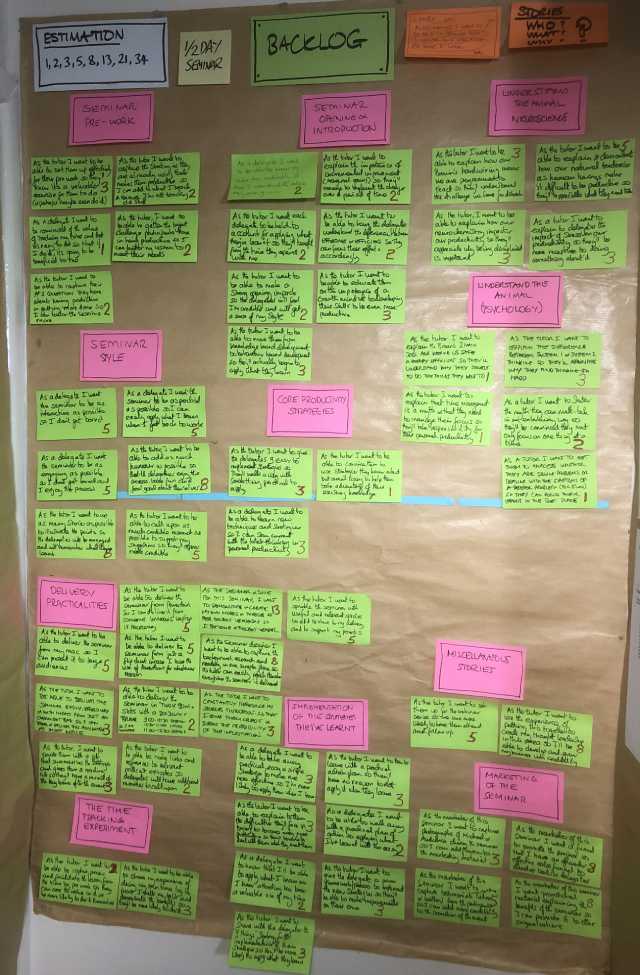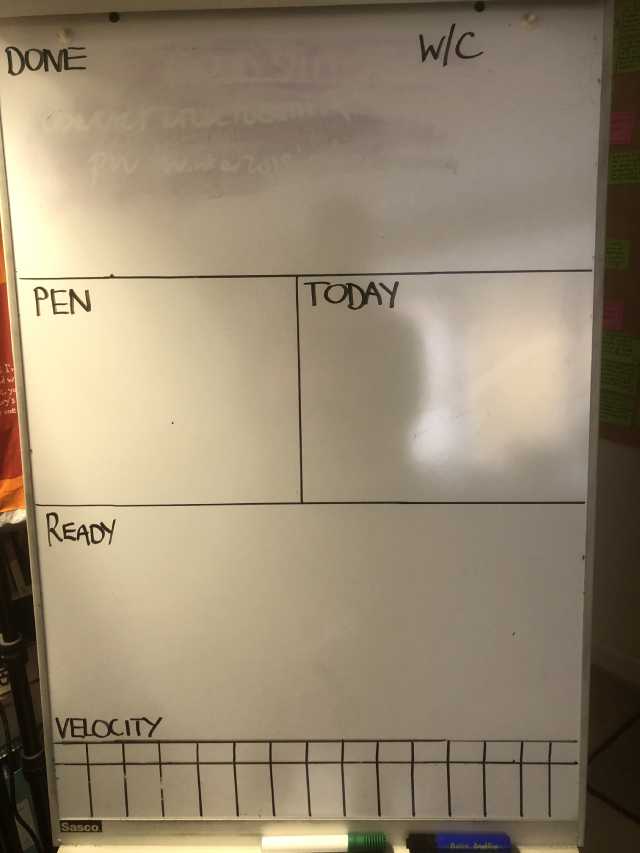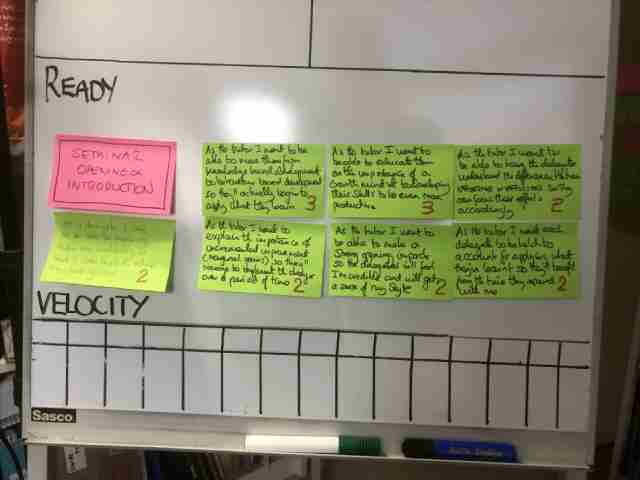
In This Episode…
Yesterday I gave an overview of the SCRUM process with my partial review of the book by Jeff Sutherland. Today I have started work on using SCRUM for my project to develop my next seminar series on productivity. This episode updates you on what I’ve done today.
Episode Show Notes
After reviewing Jeff Sutherlands book “SCRUM, The Art Of Doing Twice The Work In Half The Time” in yesterday’s episode, today I have been applying what I learnt to kick start my own project.
Putting Together The Initial Backlog
My first task today was to build upon the stories I started developing yesterday when I began creating my backlog.
It took me a while but after a couple of hours of thinking, sorting, re-thinking and re-sorting I came up with a list of 56 stories. These follow the structure of:
- Who (the customer)
- What (what they are going to get)
- Why (why they are going to get it)
My customer included me as the tutor, the delegate, my marketing manager (me), the product designer (me again) and my client (not me this time!).
It was relatively easy to put this together and the ideas did flow. More stuff came up as I gathered the ideas and thought through what needed to be done.
Here’s what my backlog looks like at the moment:

Now I know this is not complete and importantly, it doesn’t have to be at this moment. The project is going to evolve as I start developing deliverables at the end of each sprint.
Requirements from the client may change as might the needs of the delegates as we start booking more on to the seminar.
But it’s ok for the backlog to change because SCRUM is a flexible approach.
Estimation
My next task was to estimate the size of each story. Normal project management might try and assess how long each story would take to complete. However Jeff went to great lengths to explain how bad we human beings are at estimating how long things take us.
And so the task here is to estimate the size of each story (in relation to each other).
Initially this was hard for me to do. I had to look at each of the stories and get a feel for how long each might take. After some pondering I came up with a rough and ready guide for the numbers 1,2,3 5 8 and 13.
1 = stories I could fulfil right now because I already have the information, skills and knowledge – these are things I already deliver
2 = stories I could deliver right now but that might need a little extra research to finalise.
3= stories that I know little about that would require a large amount of research to get up to speed.
5 = stories that would require a large amount of effort to complete
8 = Stories that seem much bigger than a 5 because of the scale of work
13 = stories that are HUGE and I am not even sure where to start at the moment.
This scale will evolve as I start the work and compare the size of each story as I complete them.
Choosing Where To Start
I realised it did not really matter where to start. The nature of putting the backlog together in stories means each will be a deliverable that can stand alone. So in theory I could start with any story.
However the reality is that there will be some dependencies. So I decided to start at the beginning.
I put together my Kanban board (a way of organising tasks that is evolved out of Lean/Agile working) and then added the stories ready for the first sprint.


So now I am ready to start on Monday.
I am waiting until then (it is Thursday today) because I don’t want to skew the velocity numbers by having a partial week.
Overall I am very excited by this and can’t wait to get going on this project.
I will keep you informed.
Until tomorrow.